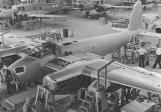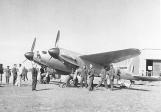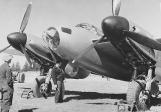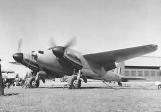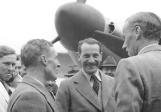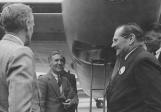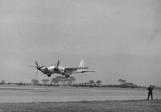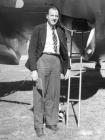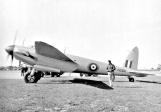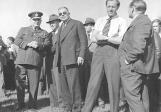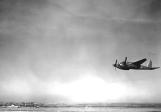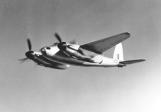1
The D.H. 98 Mosquito was conceived as a private venture in great secrecy during the most desperate days of WW II. The idea of a fast, light, unarmed bomber made mostly of wood was as unorthodox as it was brilliant. Sceptical government and military leaders became believers as reports of the design's outstanding performance became known.As a bomber, the Mosquito could carry more bombs than many of the heavy bombers of the period, and was relatively immune from interception because of its high speed. The Mosquito was later developed as a heavily-armed long range fighter as well. Eventually, there were more than 50 different models of this famous aircraft.
The decision to manufacture the Mosquito in Canada was made early on because British factories were being bombed regularly by the Luftwaffe, and there was still some danger of invasion. The main problem for de Havilland Canada was that little help was available from the parent company in England. North American suppliers had to be found for most parts.
6
Ralph Spradbrow may be the great unsung hero of Canadian WW II aviation history. When Geoffrey de Havilland Jr. was delayed due to bad weather in England, Ralph got the job of piloting the Canadian Mosquito protoype on its first flight on September 23, 1942. Since there was a complete news blackout of this historic event for wartime security reasons, few Canadians were aware that one of their own was involved.Geoffrey was available for the second flight on October 2, 1942, and by then the existence of the Mosquito had been officially revealed to the press. Some 4,000 employees were allowed to witness this flight, and Geoffrey even made a few passes over downtown Toronto. Needless to say, Ralph Spradbrow did not get much credit.
Spradbrow had not tested anything more challenging than the Anson at that time. Nothing like the Mosquito had even existed in Canada. The RCAF was still flying obsolete Goblin biplane fighters that were little more than about half as fast (top speed 220 mph).
